December 2023
Chion-in ( Monastery of Gratitude)
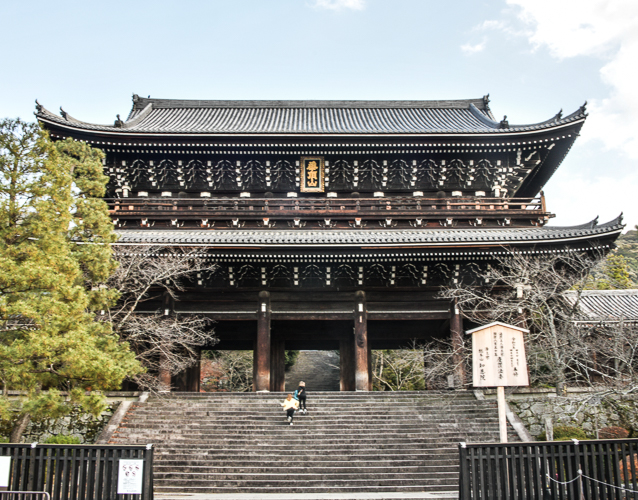
The colossal main gate, the Sanmon, was built in 1619 and is the largest surviving structure of its kind in Japan. It features an Irimoya-zukuri or a Hip and Gabled roof. The purpose of the hip and gable roof is to protect the center point of the temple.
Yasaka Pagoda
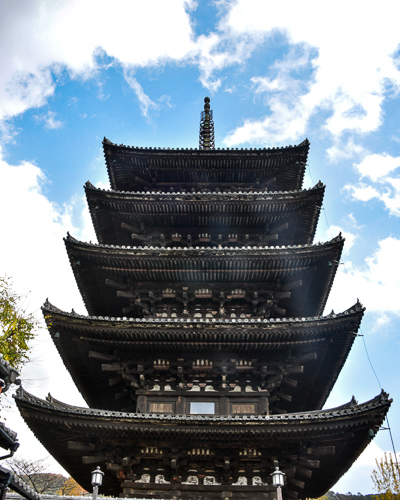
The Tower of Yasaka is the last remaining structure of a 6th-century temple complex known as Hōkan Temple.
Yasaka Kōshin-dō
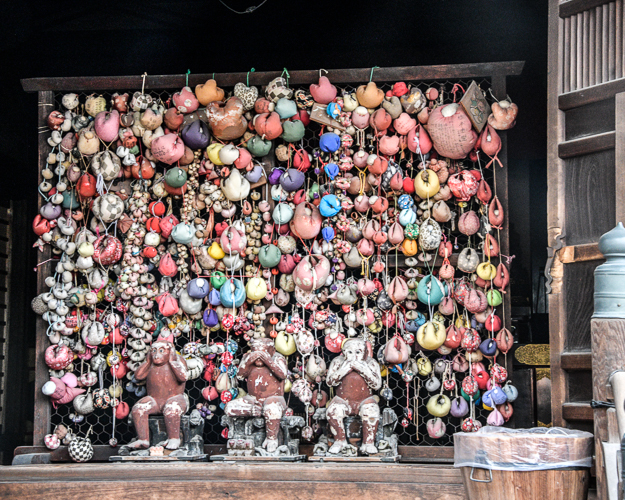
The temple is dedicated to Shomen Kongo, a guardian warrior, and to the three wise monkeys.
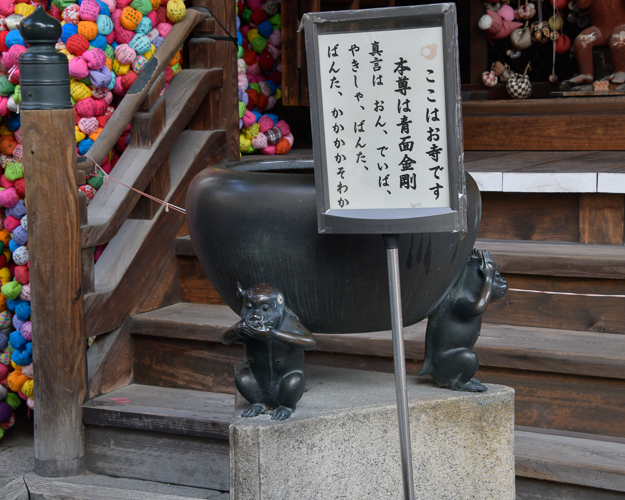
The colored balls are kukurizaru. They represent control over playfulness and desire-driven behavior. Visitors make a wish by placing one of their (bad) desires into a kukurizaru and leaving it with Koshin-san. Koshin-san takes away the desire and grants the wish.
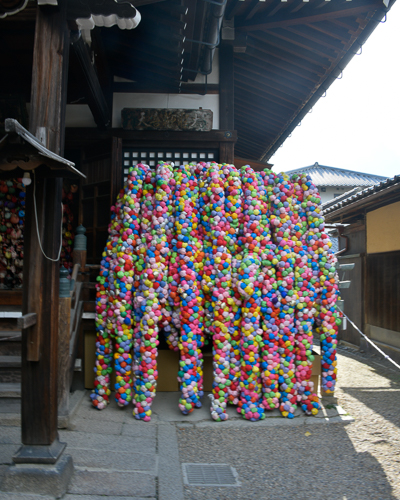
Sadly, this pagoda is overrun with kimono-clad tourists, as it has now become a highly treasured “Instagram” spot.
Kabuki
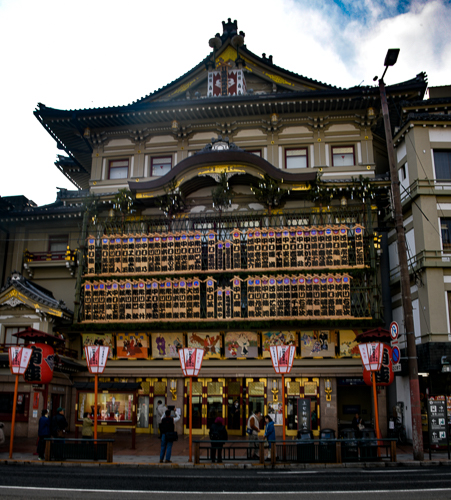
Minamiza Kabuki Theatre was founded in 1610 as Shijō Minami-za. The current building was built in 1929.
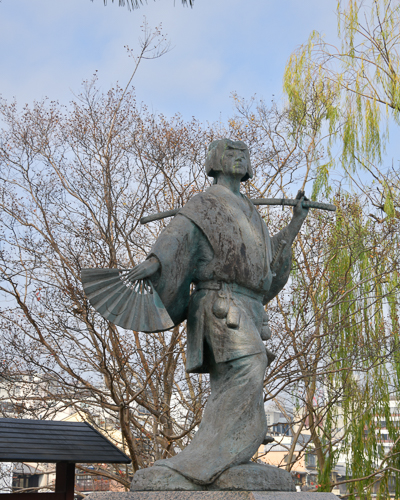
A statue of Izumo-no-Okuni around the corner from the Kabuki Theater. Izumo-no-Okuni (1578 – 1613) was a Japanese entertainer who is believed to have invented the theatrical art form of kabuki.
Arashiyama
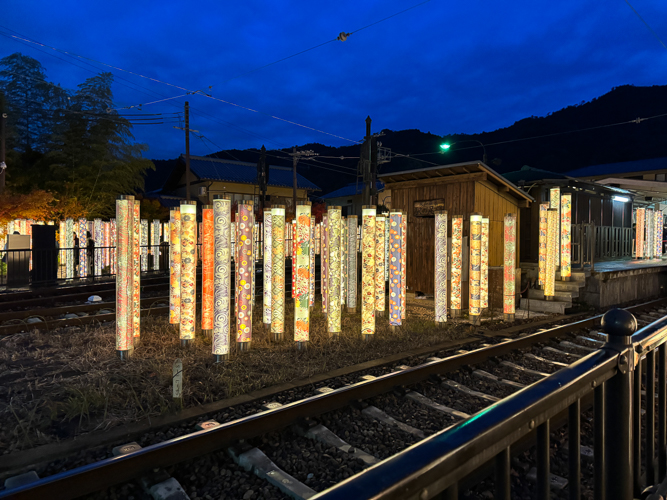
The Kimono Forest at the Arashiyama Train Station
The fabrics for the Kimono Forest were traditionally dyed in the Kyo-Yūzen method unique to Kyoto, in the workshop of the Kameda-Tomi company, a kimono manufacturer established in 1919 and known for its invention of Hawaiian-style Kyo-Yūzen shirts.
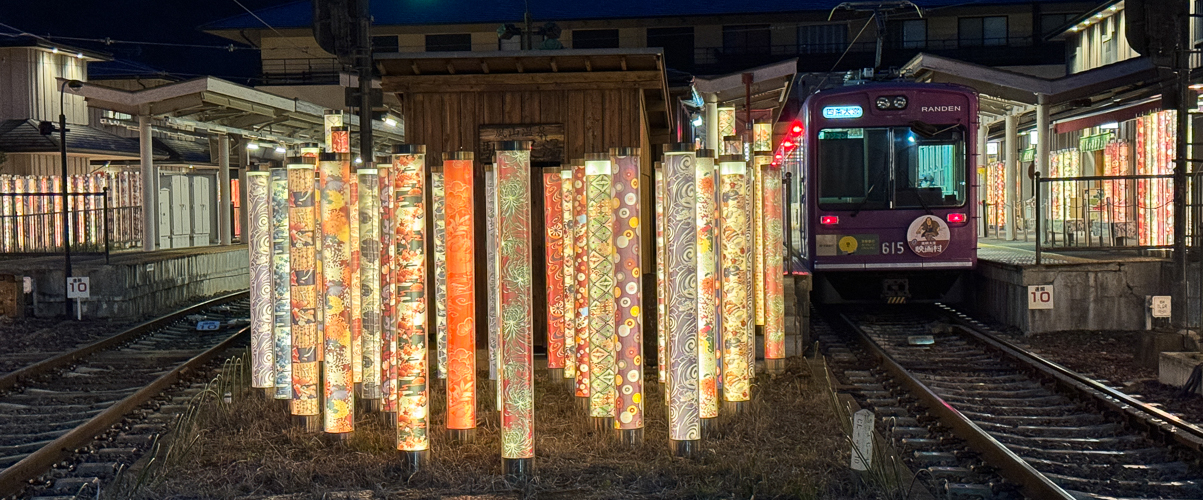
Selected by world-famous interior designer Yasumichi Morita, the Kimono Forest boasts a total of 32 different patterns, from flowers to flying cranes to geometric figures. Since I have a passion for skeletons, I could not help but notice that several of the kimonos were ornamented with them.
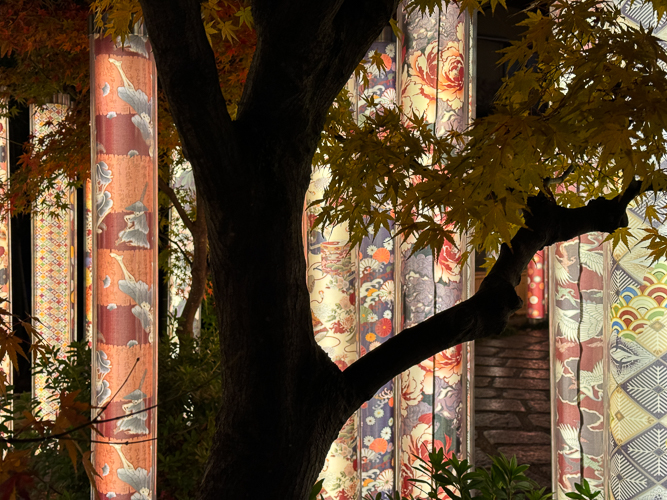
When I first visited the Bamboo Forest 15 years ago, there was no one around. Today, I found as many people with selfie sticks as there are bamboo stalks. The forest is also famous for the beautiful sounds that the bamboo makes, impossible to hear above the din of the noisy and disrespectful tourists.
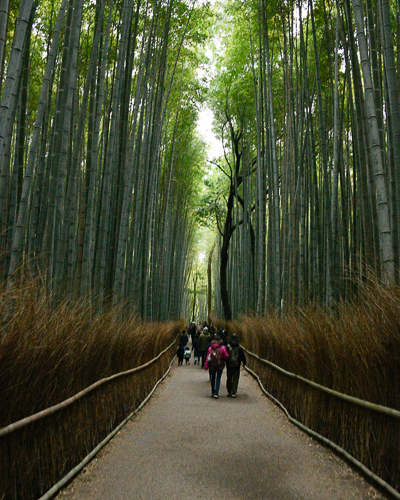
Arashiyama Bamboo Forest
I am not being flippant when I say, disrespectful tourists. At least 100 bamboo trees in the Arashiyama bamboo forest have been defaced with carvings in English, Chinese, and Korean languages. These carvings are killing the trees.
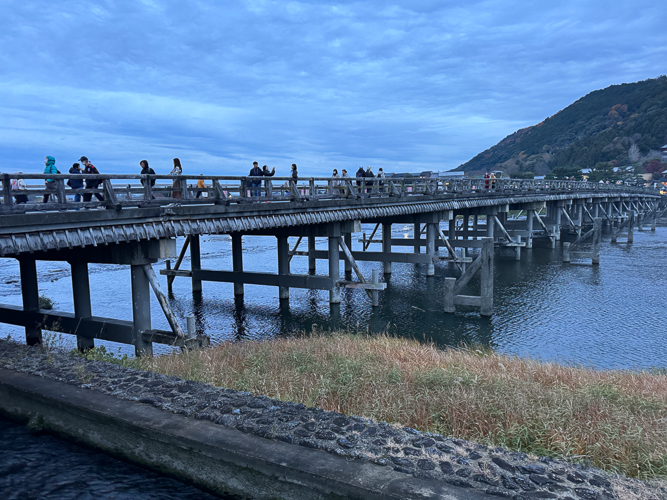
Togetsukyo Bridge over the River Ōi near the Bamboo Forest
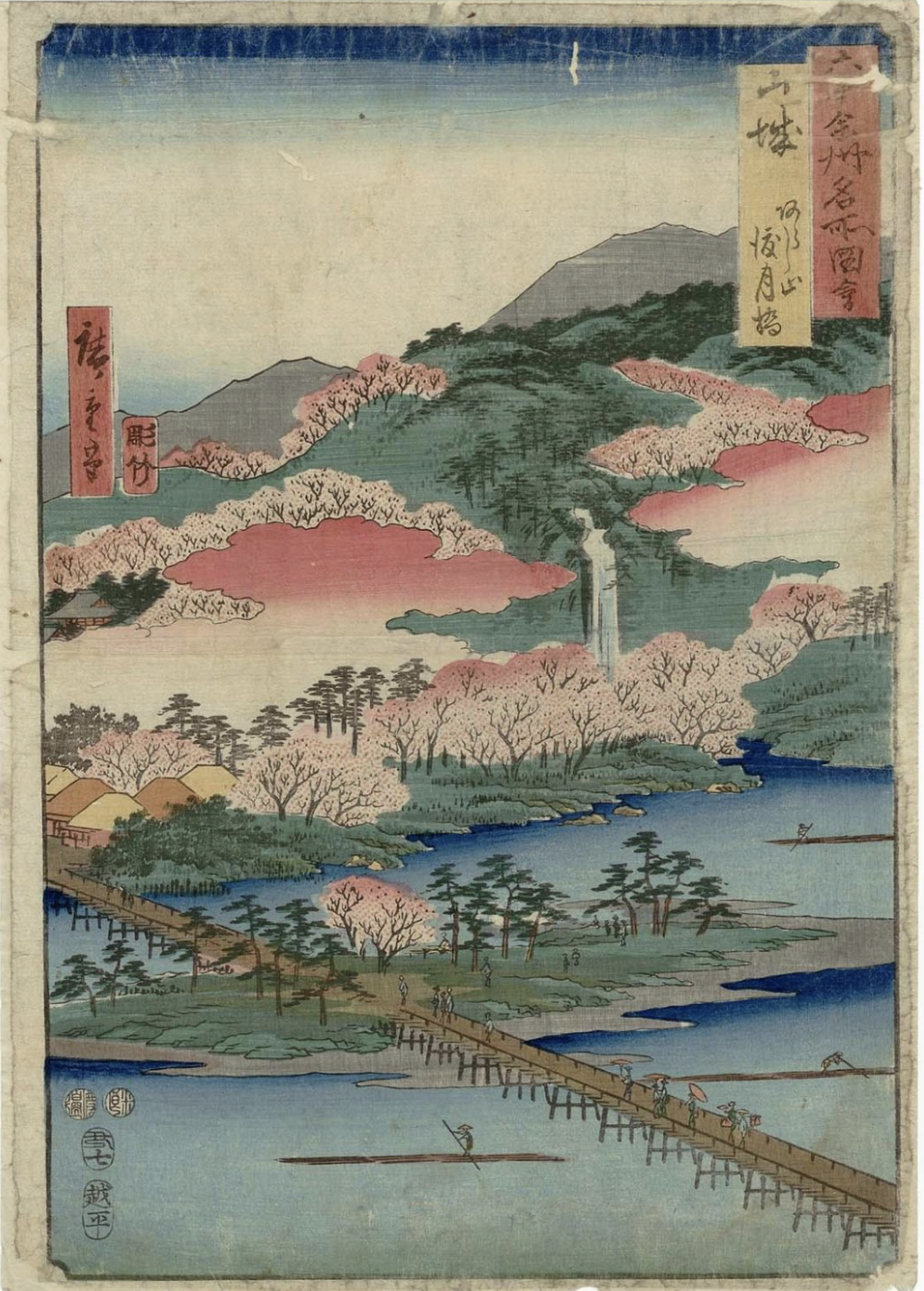
Togetsukyo Bridge as seen in one of artist Hiroshige’s ukiyo-e prints in the set: Famous Views of the Sixty-odd Provinces.
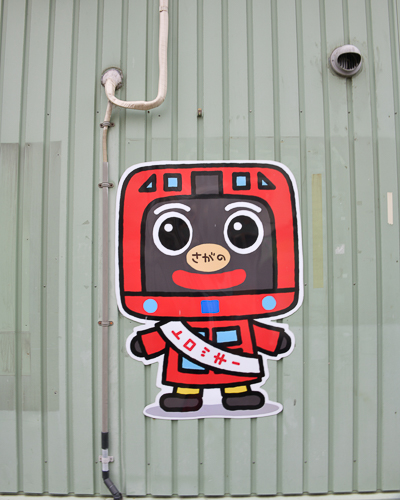
While it could be considered hokey the Romantic Train is a nice little hour in the Bamboo Forest. Called the Romantic Train on some websites or the Roman Tick on others, no matter what it is a nice trip along the river, especially with the changing leaves.
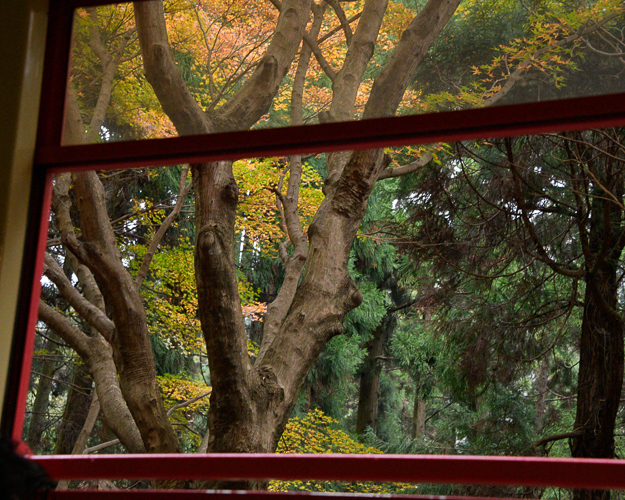
*
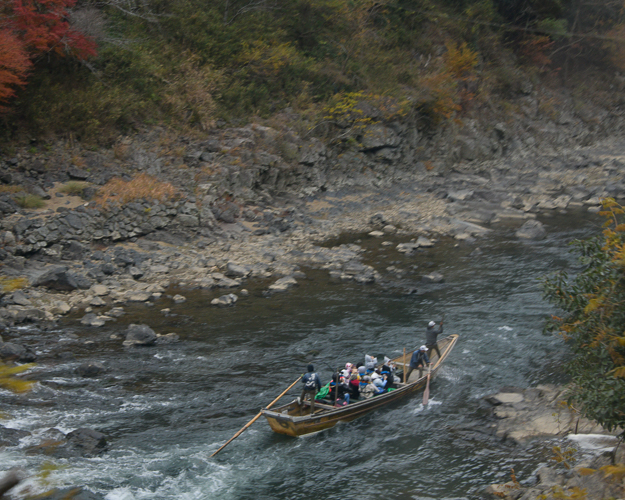
The train follows the river and you can often spot another tourist attraction, taking a boat down the river.
Aside from the Kimono Forest, another reason to visit this area of Kyoto is the Ōkōchi Sansō Villa, the former residence of Japanese period film star Ōkōchi Denjirō (1898-1962). That is for another post.
Kyoto Tower
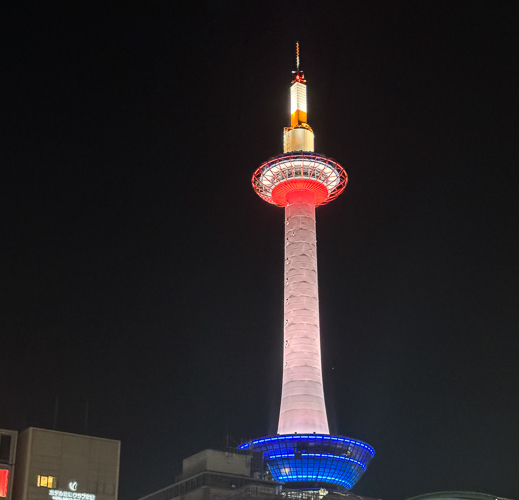
Kyoto Tower
Kyoto Tower was proposed as an observation tower in the early 1960s, to be completed in time to correspond with the 1964 Summer Olympics in Tokyo. Construction began in 1963 on the former site of Kyoto’s central post office and was completed near the end of 1964.
Kyoto Tower was the first tower in the world to be built as a structure of steel plates joined into a cylinder without using iron frames. It was designed to withstand typhoons and earthquakes.
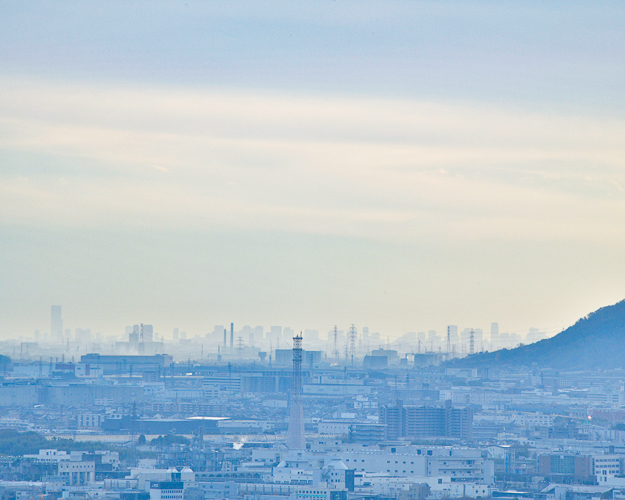
On a clear day, you can see Osaka from Kyoto Tower.
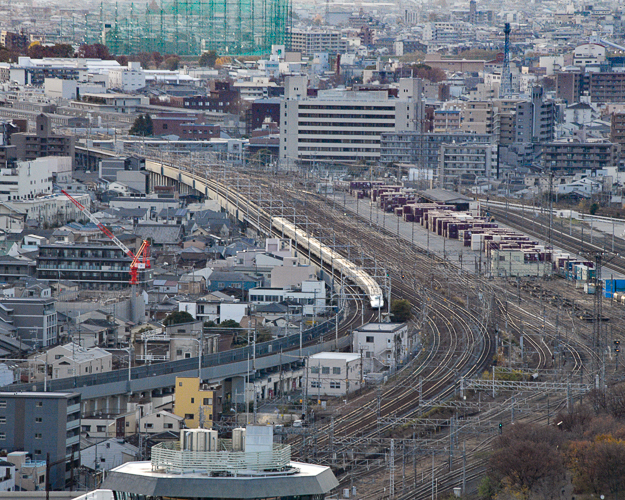
The Shinkansen (bullet train) arriving at Kyoto station as seen from Kyoto Tower.
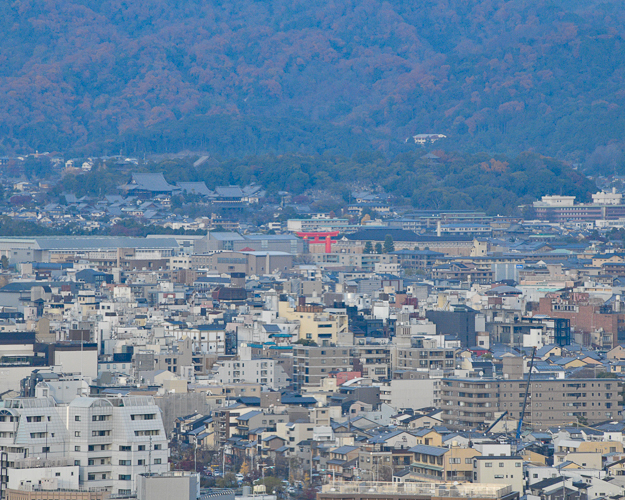
The Torii Gate just one block from my hotel, as seen from Kyoto Tower
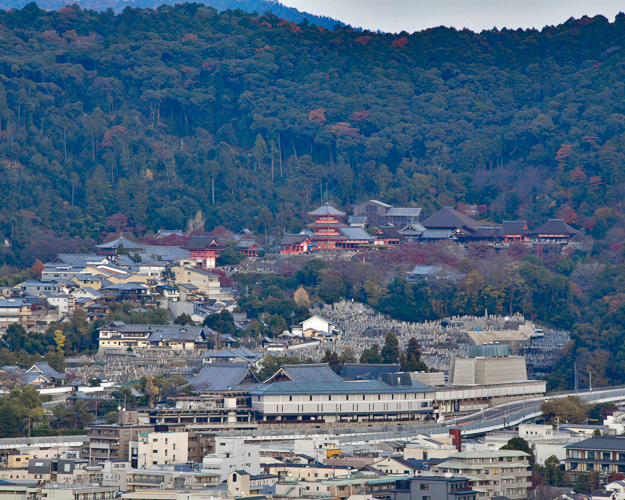
Kiyomizu-Dera Temple, as seen from Kyoto Tower